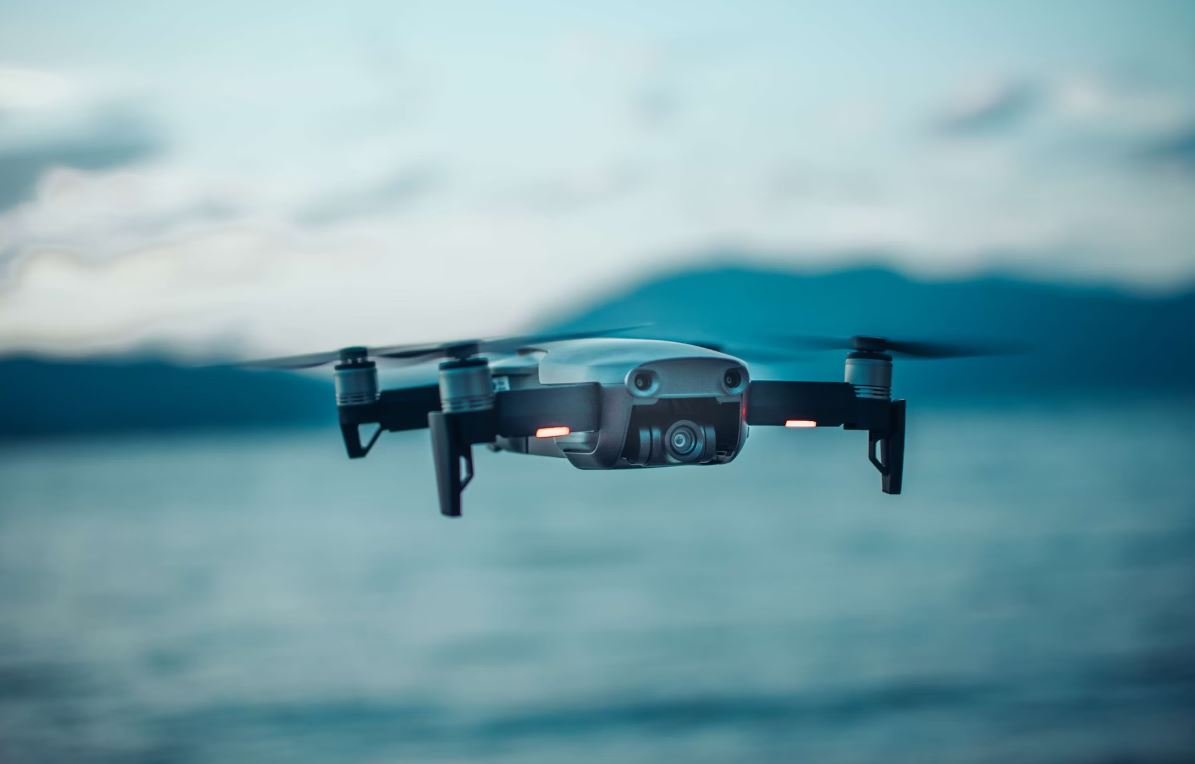Tesla and Westinghouse
Nikola Tesla and George Westinghouse were key figures in the development of alternating current (AC) power systems, which revolutionized the world of electricity. Their collaboration and inventions paved the way for modern electric power distribution and had a significant impact on various industries.
Key Takeaways
- Tesla and Westinghouse played pivotal roles in the development of AC power systems.
- Their inventions and collaboration revolutionized electric power distribution.
- AC power became the dominant method for delivering electricity due to its efficiency and ability to transmit over long distances.
Tesla, a brilliant Serbian-American inventor and engineer, is best known for his contributions to AC power systems and the development of the induction motor.
Tesla’s vision of a world powered by free wireless energy captivated the imagination of many.
On the other hand, Westinghouse was an American entrepreneur and a pioneer in the electrical industry.
Despite facing financial hardships, Westinghouse’s determination drove him to make significant contributions to the industry.
Tesla’s Inventions
Tesla’s most notable inventions include the induction motor, the Tesla coil, and the polyphase system for the generation and transmission of AC power.
His induction motor laid the foundation for using AC power to drive industrial machinery, making it more efficient and economical.
Westinghouse’s Contributions
Westinghouse recognized the potential of Tesla’s AC power system and acquired the patents to further develop the technology.
His company, Westinghouse Electric, became a prominent player in the electric power industry and competed directly with Thomas Edison’s direct current (DC) system.
Westinghouse’s decision to adopt and promote AC power proved to be a game-changer for the industry.
Impact on Electric Power Distribution
The collaboration between Tesla and Westinghouse led to widespread adoption of AC power over DC power for electric power distribution.
AC power offered several advantages over DC power, including the ability to transmit electricity over long distances with minimal power loss.
This breakthrough led to the establishment of large-scale power grids that electrified cities and fueled the Industrial Revolution.
Tables
| Inventor | Invention | Year |
|---|---|---|
| Nikola Tesla | Induction Motor | 1887 |
| Nikola Tesla | Tesla Coil | 1891 |
| Nikola Tesla | Polyphase System | 1888 |
| Advantages of AC Power |
|---|
| Efficient transmission over long distances |
| Ability to power industrial machinery |
| Lower power loss compared to DC systems |
| Key Players | Contributions |
|---|---|
| Nikola Tesla | AC power inventions and induction motor |
| George Westinghouse | Acquisition of Tesla’s patents and promotion of AC power |
| Thomas Edison | Development of the direct current (DC) system |
Legacy
The combined efforts of Tesla and Westinghouse vastly improved the efficiency, reliability, and safety of electric power systems.
Their contributions laid the foundation for the modern electric power industry and continue to impact our lives today.

Common Misconceptions
Tesla and Westinghouse
There are several common misconceptions surrounding the relationship between Nikola Tesla and George Westinghouse. One of the most prevalent misconceptions is that Westinghouse was solely responsible for the development and implementation of alternating current (AC) technology. However, it was actually Tesla who first proposed the concept of AC and developed the necessary systems for its practical application.
- Tesla was the genius behind AC technology.
- Tesla’s contributions were instrumental in the success of Westinghouse’s AC systems.
- Westinghouse recognized Tesla’s brilliance and supported his work financially.
Personal Rivalry
Another misconception is that Tesla and Westinghouse were bitter rivals. While there were instances of competition between them, particularly during the war of the currents with Thomas Edison, Tesla and Westinghouse actually had a mutually beneficial and respectful relationship. Westinghouse recognized Tesla’s talent and inventions, and provided him with the necessary resources to bring his ideas to fruition.
- Tesla and Westinghouse had a symbiotic relationship.
- They respected each other’s work and collaborated on projects.
- Tesla’s success largely depended on Westinghouse’s support.
Financial Difficulties
Many people mistakenly believe that Tesla and Westinghouse were financially successful throughout their careers. However, both men faced significant financial difficulties at various points in their lives. Tesla, in particular, experienced numerous financial setbacks due to failed business ventures and disagreements with investors. Westinghouse also encountered financial challenges, including the impact of the economic depression in the 1890s.
- Tesla struggled to secure funding for his inventions.
- Both Tesla and Westinghouse faced financial hardships.
- Their success was not always reflected in their financial situations.
Contributions to Society
A common misconception is that Tesla and Westinghouse’s contributions were limited to electricity and power systems. While Tesla is renowned for his work in the field of electrical engineering, he also made pioneering contributions in various other areas, including wireless communication, robotics, and even the development of remote control. Similarly, Westinghouse’s innovations extended beyond electricity, with notable contributions to the fields of railroad safety and air brake systems.
- Tesla’s inventions had a broad impact beyond electricity.
- Westinghouse’s contributions extended beyond the power industry.
- Both men were multifaceted inventors with diverse interests.
Recognition and Legacy
Lastly, there is a misconception that Tesla and Westinghouse did not receive sufficient recognition for their contributions during their lifetimes. While it is true that both men faced challenges in receiving full credit for their achievements, they were widely respected in their fields and received numerous accolades and honors. Today, their legacy is firmly established, and they are recognized as key figures in the development of modern electrical and industrial systems.
- Tesla and Westinghouse received recognition for their work.
- Their legacy is highly regarded in the scientific and engineering communities.
- They played integral roles in shaping modern technology and infrastructure.

Tesla’s Achievements
Nikola Tesla was a renowned inventor and electrical engineer. He made significant contributions to numerous areas of science and technology. This table highlights some of Tesla’s notable achievements.
| Year | Accomplishment |
|---|---|
| 1882 | Built his first induction motor prototype |
| 1888 | Patented the Tesla coil |
| 1891 | Invented the Tesla turbine |
| 1893 | Developed alternating current (AC) power transmission |
| 1895 | Built the first hydroelectric power plant at Niagara Falls |
Westinghouse’s Power Projects
Westinghouse Electric Corporation, led by George Westinghouse, played a vital role in the development and application of Tesla’s inventions. This table highlights some of Westinghouse’s significant power projects.
| Year | Power Project |
|---|---|
| 1891 | Installed first large-scale AC power system in Great Barrington, Massachusetts |
| 1893 | Built AC power systems for the 1893 World’s Columbian Exposition in Chicago |
| 1895 | Constructed AC power distribution system for the city of Pittsburgh |
| 1905 | Supplied AC generators for the famous Niagara Falls Power Plant |
| 1920 | Completed the Lastingham Power Station, the largest in the world at that time |
Tesla vs. Westinghouse
During the late 19th century, Nikola Tesla and George Westinghouse collaborated closely to promote and implement AC electric power systems. This table compares some key aspects of their collaboration.
| Aspect | Tesla | Westinghouse |
|---|---|---|
| Inventions | Tesla was the inventor behind major breakthroughs | Westinghouse supported and helped commercialize Tesla’s inventions |
| Business | Tesla primarily focused on inventing, lacked business acumen | Westinghouse had a successful business empire and funded Tesla |
| AC Power | Tesla developed AC power transmission | Westinghouse applied and distributed AC power |
| Collaboration | Tesla and Westinghouse worked closely together on projects | Westinghouse appreciated Tesla’s genius and supported his ideas |
| Legacy | Tesla’s inventions changed the world, but he died in relative obscurity | Westinghouse’s wealth and reputation endured, but Tesla’s contributions were recognized later |
Patents Held by Tesla
Nikola Tesla was granted numerous patents for his inventions across various fields. This table showcases a few of Tesla’s notable patents.
| Year | Patent Title |
|---|---|
| 1886 | Alternating Electric Current Generator |
| 1891 | System of Electric Lighting |
| 1894 | Apparatus for the Utilization of Radiant Energy |
| 1897 | Art of Transmitting Electrical Energy Through the Natural Mediums |
| 1901 | Method of Utilizing Radiant Energy |
Westinghouse Electric Facts
Westinghouse Electric Corporation played a significant role in the electrification of the world. This table presents some interesting facts about Westinghouse Electric.
| Fact | Details |
|---|---|
| Founding Year | Westinghouse Electric Corporation was founded in 1886 |
| Number of Employees in 1900 | More than 50,000 employees |
| Major Contributions | Westinghouse pioneered AC power systems, electric appliances, and railway technologies |
| Notable Projects | Niagara Falls Power Plant, Great Barrington AC Power System, Lastingham Power Station |
| Acquired by | Merged with CBS Corporation in 1995 |
Tesla’s Vision for Wireless Energy Transmission
Nikola Tesla had a grand vision of transmitting power wirelessly. This table depicts some aspects of Tesla’s visionary idea.
| Elements | Details |
|---|---|
| Wardenclyffe Tower | Tesla aimed to build a wireless power transmission station in Shoreham, New York |
| Global Network | Tesla envisioned a network of towers transmitting power worldwide |
| Free Energy | He intended to provide free electricity to all people |
| Financial Support | JP Morgan financed Tesla initially but withdrew funding later |
| Unrealized Dream | Wardenclyffe Tower was never completed, and Tesla’s vision remained unfulfilled |
Westinghouse Impact on Electric Power Distribution
George Westinghouse‘s contributions revolutionized the field of electric power distribution. This table highlights key impacts of Westinghouse’s work.
| Impact | Details |
|---|---|
| Promoting Alternating Current | Westinghouse popularized AC power over Thomas Edison’s direct current (DC) |
| Wide-scale Electrification | Westinghouse’s AC systems enabled the widespread provision of electricity to homes and businesses |
| Advancement in Transmission | Implemented high-voltage transmission to transport electricity efficiently over long distances |
| Industrial Growth | Electrification supported the growth of industries, especially manufacturing and urbanization |
| Standardization | Contributed to establishing standards for electrical systems and safety regulations |
Tesla’s Impact on Modern Technology
Nikola Tesla‘s inventions and ideas continue to shape modern technology. This table highlights some areas influenced by Tesla’s work.
| Area | Tesla’s Contribution |
|---|---|
| Electric Power | AC power systems, induction motors, transformers |
| Wireless Communication | Wireless transmission, radio technologies |
| Renewable Energy | Hydroelectric power, wind turbines |
| X-Ray Technology | Pioneered early advancements in X-ray technology |
| Robotics | Contributed to the development of remote control and automation |
Nikola Tesla and George Westinghouse’s collaboration in the late 19th and early 20th century paved the way for numerous breakthroughs in electrical engineering and power distribution. Tesla’s inventions, supported by Westinghouse’s business acumen, revolutionized the world’s approach to energy. Tesla’s vision of wireless power transmission, although unrealized, continues to inspire future generations. Westinghouse’s impact in promoting AC power distribution and electrification transformed societies and fueled industrial growth. Both Tesla and Westinghouse played crucial roles in shaping modern technology, leaving a lasting legacy in the field of electricity.
Frequently Asked Questions
1. Can you explain the relationship between Tesla and Westinghouse?
Westinghouse Electric Corporation, headed by George Westinghouse, was a key backer and promoter of Nikola Tesla’s alternating current (AC) electrical system. Tesla’s invention and Westinghouse’s support revolutionized the electricity industry and facilitated the widespread adoption of AC power.
2. What were Tesla’s contributions to the AC power system?
Tesla’s contributions to the AC power system include the development of the induction motor, transformer technology, and the AC distribution system. These inventions formed the foundation for the transmission and distribution of electricity over long distances, enabling the efficient use of alternating current.
3. How did Westinghouse support Tesla’s inventions?
Westinghouse recognized the potential of Tesla’s AC system and acquired the patents for his inventions. He provided financial and logistical support to Tesla’s experiments and played a significant role in popularizing and commercializing AC power, including through partnerships with major electric utilities.
4. Why was the AC power system a significant advancement?
The AC power system was a significant advancement because it allowed for the efficient transmission of electricity over long distances, reducing energy losses and enabling electricity to be generated at centralized power plants and distributed to consumers. This made electricity more accessible and affordable, leading to the electrification of homes, businesses, and industries.
5. Were there any competing power systems during this time?
Yes, during the same time period, there was a competing direct current (DC) power system, championed by Thomas Edison. The AC power system, championed by Tesla and supported by Westinghouse, ultimately prevailed due to its superior ability to transmit electricity over long distances without significant power loss.
6. Did Tesla and Westinghouse face any challenges or opposition?
Yes, Tesla and Westinghouse faced numerous challenges and opposition, particularly from those who had invested heavily in the existing DC power infrastructure. The “War of Currents” between AC and DC power systems involved intense competition, propaganda campaigns, and even public demonstrations to showcase the dangers of each system.
7. What is the legacy of Tesla and Westinghouse’s collaboration?
The collaboration between Tesla and Westinghouse had a profound impact on the electricity industry. Their work laid the foundation for the modern power grid and the widespread use of AC power. Their contributions, innovations, and inventions continue to shape the world of electrical engineering and power distribution to this day.
8. How are Tesla and Westinghouse remembered in history?
Tesla and Westinghouse are remembered as pioneers of electrical engineering and proponents of AC power. Tesla is well-known for his groundbreaking inventions and his eccentric personality. Westinghouse is recognized for his business acumen and his support of Tesla’s inventions. Both individuals have left a lasting impact on the history of technology.
9. Where can I learn more about Tesla and Westinghouse?
You can find more information about Tesla and Westinghouse in various biographies, historical books, and online resources. There are also museums dedicated to their work, such as the Tesla Museum in Serbia and the Westinghouse Electric museum in Pennsylvania.
10. How does their work continue to influence the world today?
The work of Tesla and Westinghouse continues to influence the world today in terms of power generation, distribution, and electrical engineering. Their contributions to the development of AC power systems laid the groundwork for modern electricity grids and made electricity widely accessible. Their legacy serves as a reminder of the importance of innovation, collaboration, and the pursuit of sustainable and efficient energy systems.




